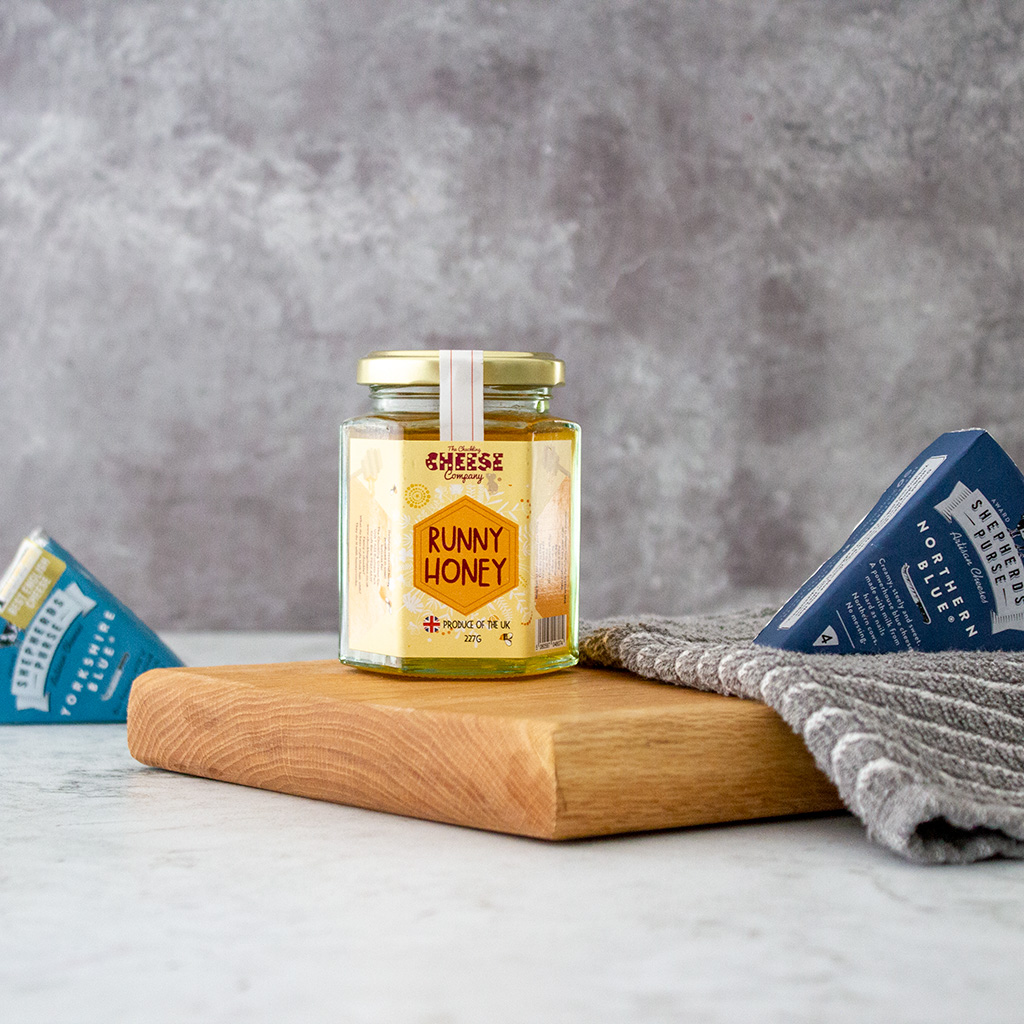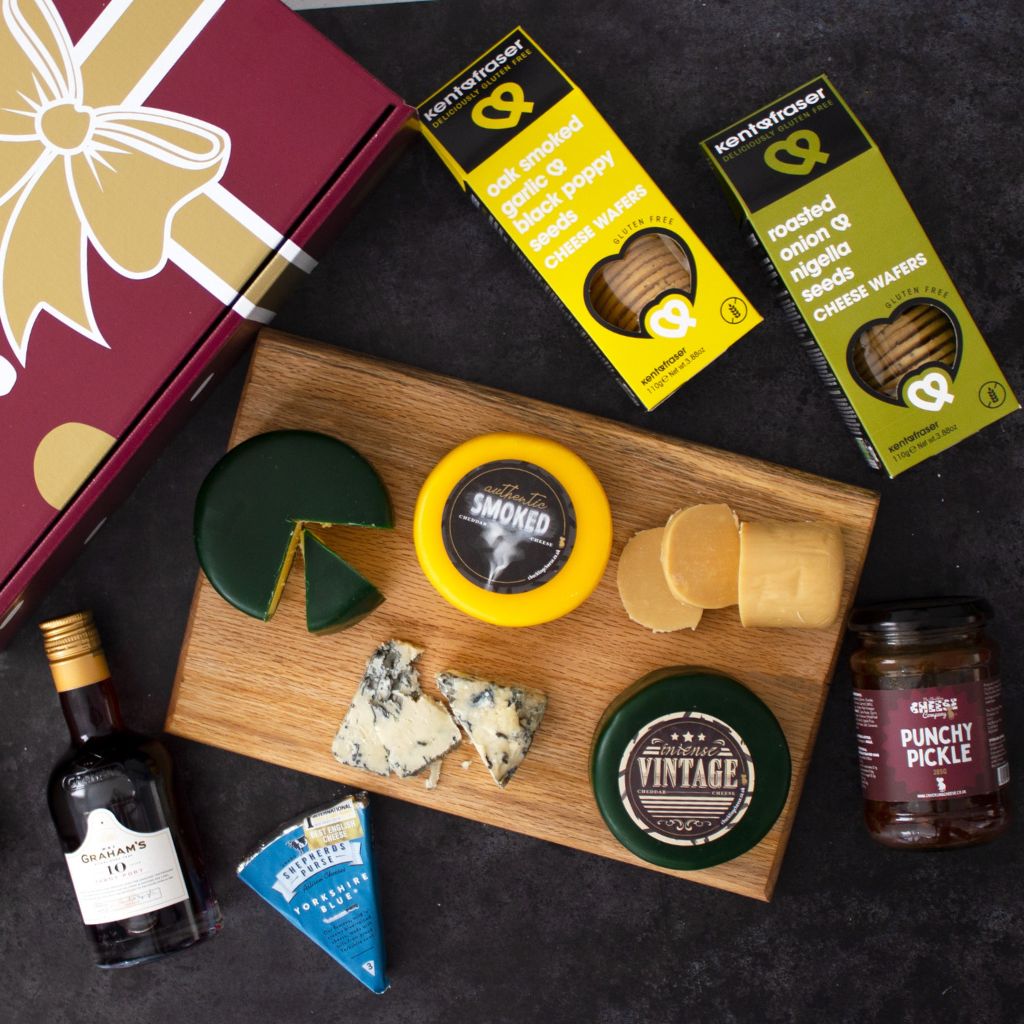How is blue cheese made?
Find out how blue cheese is made by the experts at The Chuckling Cheese Co, who offer a wide selection of delicious cheeses and luxury cheese hampers.
Blue cheese is one of the most delicious and complex cheeses you can find. It's also one of the most popular, offering a punch of flavour with its sharp taste and creamy centre. The process of making blue cheese is relatively simple but requires quite a bit of time to complete. In this article, we answer the question, 'how is blue cheese made?', offering a step-by-step guide should you want to try it yourself.


What is blue cheese?
Blue cheese is a semi-soft cheese that is thought to have been around since the Middle Ages when milk from a ewe turned a piece of bread mouldy.
There are many different types of blue cheese, which have evolved over time in Europe. However, all of them are recognised by the telling characteristic of blue/grey spots of mould on the surface and their distinct smell.
So, how is blue cheese made?
1. Pasteurisation
The first step to making blue cheese is to pasteurise the milk, which kills off any unwanted bacteria that could spoil or affect the taste of the cheese. This is an important process as it ensures that the cheese is safe to eat by stopping the relevant vitamins and proteins from being destroyed.
When milk is pasteurised, it is heated to a high temperature of 90 degrees. The milk is first placed in a small container and then this goes inside a larger container filled with warm water.
This helps to prevent the milk from scalding, however, if you wanted to put the milk directly over heat, you would need to make sure it was stirred well.
2. Acidification
After the pasteurisation process, the milk is allowed to sit at room temperature for two to three hours.
The acidification process begins when the starting culture is added, which is what encourages the growth of the lactic acid that gives blue cheese its distinct flavour and texture.
The ripening continues once the milk cools down and at this point, penicillium is added, which is a species of fungus that is responsible for the characteristic blue veins seen in blue cheese.
The addition of the mould to the cheese turns it from soft and creamy to chalky and crumbly, creating a complex flavour profile that makes it unique from other cheeses like cheddar or gouda.
3. Adding rennet to thicken it
The next step is to add rennet, which is a family of enzymes that help to coagulate milk. It is used in many kinds of cheese, but the type of rennet used depends on the cheese being made.
For example, if you were making cheddar cheese, you would need to use a different kind of rennet than if you were making camembert, and the same goes for blue cheese.
Blue cheese isn’t always made with animal-derived enzymes; some blue cheeses like Roquefort use a calf’s stomach lining because it produces more crystals than a kid’s stomach lining does and can lead to better flavour development.
4. Draining and creating the cheese
Once the thickening process is complete, the curds are then drained using a colander whilst they are still warm and covered in salt.
The cheese is then transferred and placed into moulds to drain out any excess moisture. Some moulds come with holes in them to allow air to pass through and stimulate mould growth within the cheese. However, once drained, the cheese should always be left to settle.
5. Letting it age
Blue cheese needs to be left to age to allow sufficient mould growth to occur. Once the cheese has aged for about 2 weeks, it is removed from its mould, wrapped in wax paper and moved to a cold ripening cellar where it is left to age further.
The ageing process allows the mould to grow, developing flavour and texture in the blue cheese. The longer it's left, the stronger the flavour will be.
Order blue cheese from The Chuckling Cheese Co
Whilst creating the final product is a long process, it's more than worth the effort. Blue cheese is a versatile food that can be used in both sweet and savoury dishes, making it a go-to ingredient for many chefs.
Here at The Chuckling Cheese Co, we offer a variety of delicious blue cheeses for you to try as well as our luxury cheese gifts if you fancy a wider selection. If you have more questions like 'how is blue cheese made?', our team is more than happy to answer them.





